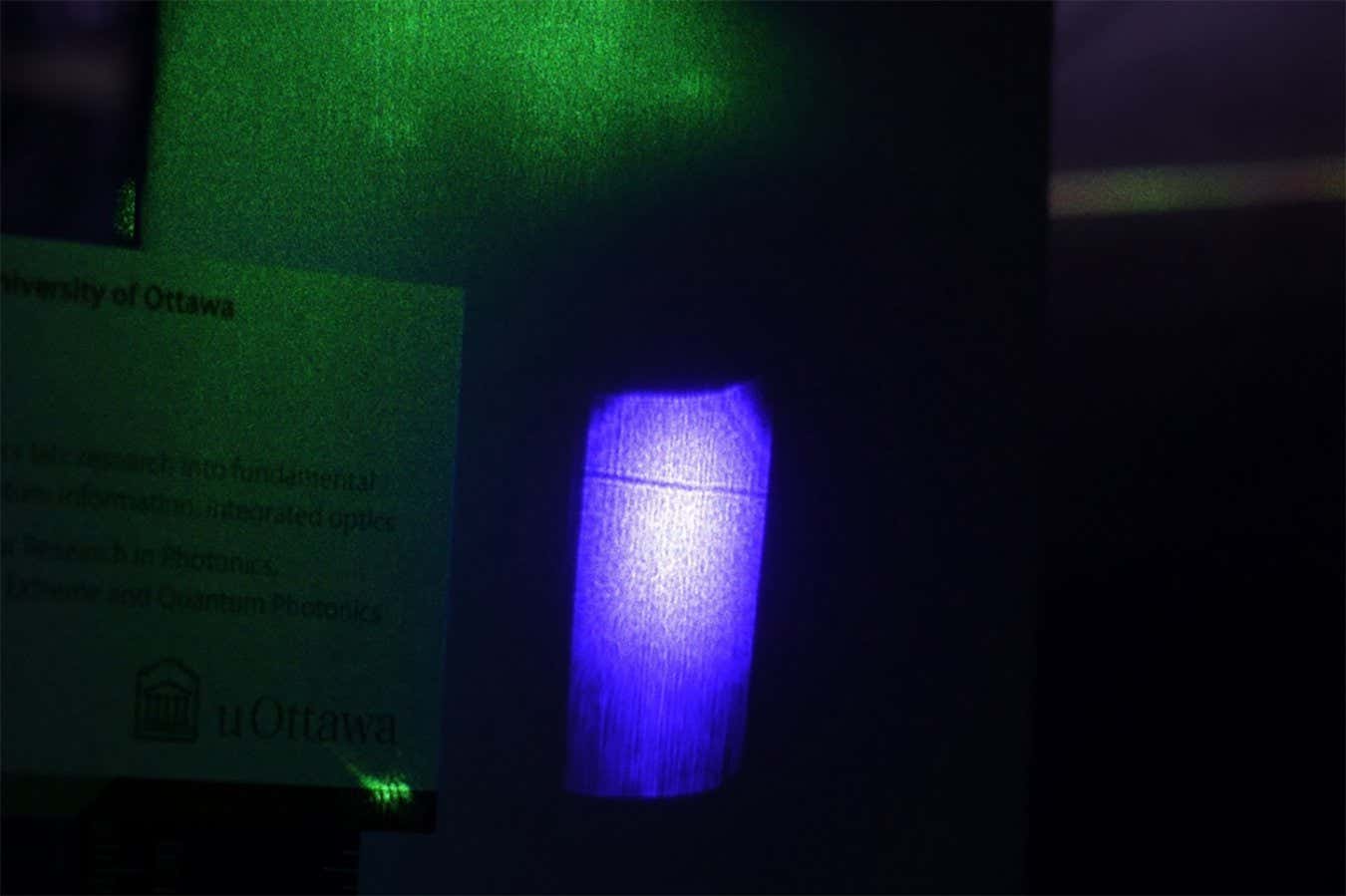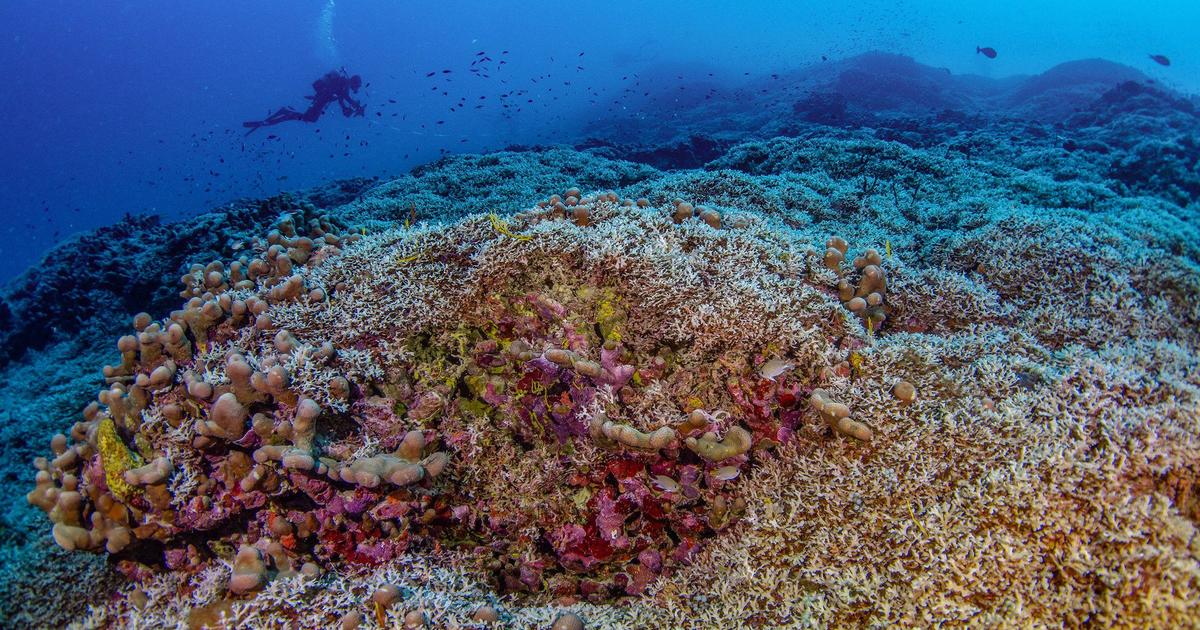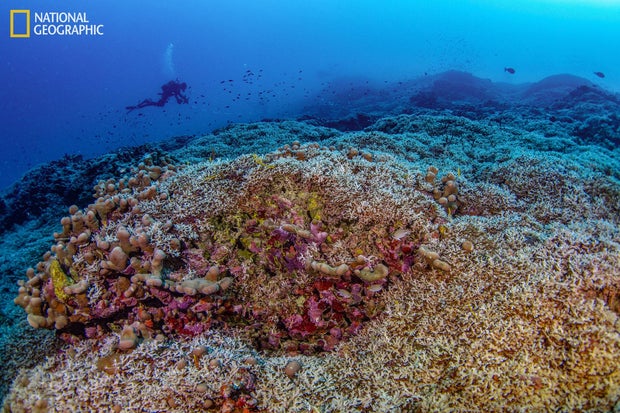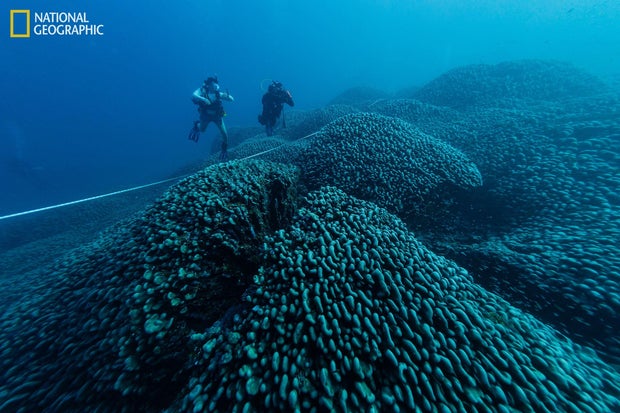Science & Environment
EPA to hit oil and gas companies with “methane fee” for drilling waste — but will it last?

Washington — Oil and natural gas companies for the first time will have to pay a federal fee if they emit dangerous methane above certain levels under a rule being made final by the Biden administration.
The Environmental Protection Agency rule follows through on a directive from Congress included in the 2022 climate law. The new fee is intended to encourage industry to adopt best practices that reduce emissions of methane – the primary component of natural gas – and thereby avoid paying.
Methane is a climate “super pollutant” that is far more potent in the short term than carbon dioxide and is responsible for about one-third of greenhouse gas emissions. The oil and natural gas sector is the largest industrial source of methane emissions in the United States, and advocates say reduction of methane emissions is a crucial way to slow climate change.
The rule, set to be announced Tuesday at an international climate conference in Azerbaijan, comes hours after President-elect Donald Trump named former New York congressman Lee Zeldin to head the agency in Trump’s second term. If confirmed by the Senate, Zeldin is expected to move to reverse or loosen dozens of environmental regulations approved under President Biden as Trump seeks to establish U.S. “energy dominance″ worldwide.
Trump is likely to target the methane fee amid a flurry of expected actions he has promised to deregulate the oil and gas industry.
As outlined by the EPA, excess methane produced in 2024 could result in a fee of $900 per ton, with fees rising to $1,200 per ton in 2025 and $1,500 per ton by 2026. Industry groups are likely to challenge the rule, including any effort to impose a retroactive fee.
The rule wouldn’t become final until early next year, following publication in the Federal Register.
EPA Administrator Michael Regan said in a statement that the rule will work in tandem with a new EPA rule on methane emissions imposed this year. The rule targets the U.S. oil and natural gas industry for its role in global warming as Mr. Biden seeks to secure his legacy on fighting climate change.
The fee, formally known as the Waste Emissions Charge, will encourage early deployment of available technologies to reduce methane emissions and other harmful air pollutants, Regan said. The fee “is the latest in a series of actions under President Biden’s methane strategy to improve efficiency in the oil and gas sector, support American jobs, protect clean air and reinforce U.S. leadership on the global stage,” he said.
Industry groups and Republican-led states have challenged the earlier methane rule in court, but lost a bid for the Supreme Court to block the rule while the case continues before lower-level judges.
Opponents argue that the EPA overstepped its authority and set unattainable standards with the new regulations. The EPA, though, said the rules are squarely within its legal responsibilities and would protect the public.
Many large oil and gas companies already meet or exceed methane-performance levels set by Congress under the climate law, meaning they are unlikely to be forced to pay the new fee, Regan and other officials said.
Even so, the EPA estimates that the rule will result in cumulative emissions reductions of 1.2 million metric tons of methane (the equivalent of 34 million metric tons of carbon-dioxide) through 2035. That figure is similar to clean-air gains from taking nearly 8 million gas-powered cars off the road for a year, the EPA said. Cumulative climate benefits could total as much $2 billion, the agency said.
Like the earlier methane rule, the new fee faces a near-certain legal challenge from industry groups. The American Petroleum Institute, the oil and gas industry’s largest lobbying group, called a fee proposed earlier this year a “punitive tax increase” that “undermines America’s energy advantage.”
The API said it looks forward to working with Congress to repeal the “misguided new tax on American energy.”
Environmental groups, for their part, have hailed the impending methane fee, saying oil and gas companies should be held accountable for pollution that contributes to global warming. Oil and gas companies routinely calculate that it’s cheaper to waste methane through flaring and other techniques than to make necessary upgrades to prevent leaks, they said.
The EPA said it expects that over time, fewer oil and gas companies will be charged for excess methane as they reduce emissions in compliance with the rule.
Science & Environment
Bizarre test shows light can actually cast its own shadow


The shadow of a laser beam appears as a horizontal line against the blue background
Abrahao et al. (2024)
Light normally makes other objects cast shadows – but with a little help from a ruby, a beam of laser light can cast a shadow of its own.
When two laser beams interact, they don’t clash together like lightsabers in Star Wars, says Raphael Abrahao at Brookhaven National Laboratory in New York. In real life, they will simply pass through each other. Abrahao and his colleagues, however, found a way for one laser beam to block another – and make its shadow appear.
The crucial ingredient was a ruby cube. The researchers hit this cube with a beam of green laser light while illuminating it with a blue laser from the side. As the green light passed through the ruby atoms, it changed their properties in a peculiar way that then affected how they reacted to the blue light.
Instead of letting the blue laser pass through them, the atoms affected by the green light now blocked the blue light, which created a shadow shaped exactly like the green laser beam. Remarkably, the researchers could project the blue light on a screen and see this “shadow of a laser” with the naked eye.
Abrahao says he and his colleagues had a long discussion of whether what they created really qualified as a shadow. Because it moved when they moved the green laser beam, they could see it without any special equipment and they managed to project it onto commonplace objects, like a marker, they ultimately decided in the affirmative.
Historically, understanding shadows has been crucial for understanding what light can do and how we can use it, he says, and this experiment adds an unexpected technique into scientists’ light-manipulation toolbox.
Tomás Chlouba at the University of Erlangen–Nuremberg in Germany says the experiment uses known processes to create a striking visual demonstration of how materials can help control light. The ruby’s interactions with the laser, for instance, are similar to those of materials used in laser eye surgeries, which must be able to respond to laser light by blocking it if it gets dangerously intense.
Topics:
Science & Environment
You can't put a price on the sense of awe particle physics inspires

Astronomy and particle physics are no longer seen as vital by the US establishment, so funding has fallen. But our work creates a sense of wonder, and wonder matters, says Chanda Prescod-Weinstein
Source link
Science & Environment
WTI rises to trade around $69 per barrel

Crude oil futures rose slightly on Thursday, with the U.S. benchmark trading around $69 per barrel, though the market outlook remains bearish.
Global crude supplies are expected to outstrip demand by more than 1 million barrels per day next year led by robust growth in the U.S., according to the International Energy Agency’s monthly market report.
Here are today’s energy prices by 8:07 a.m. ET:
- West Texas Intermediate December contract: $68.92 per barrel, up 49 cents, or 0.7%. Year to date, U.S. crude oil is down more than 3%.
- Brent January contract: $72.78 per barrel, up 50 cents, or 0.7%. Year to date, the global benchmark is down more than 5%.
- RBOB Gasoline December contract: $1.9711 per gallon, up 0.3%. Year to date, gasoline has fallen nearly 6%.
- Natural Gas December contract: $2.966 per thousand cubic feet, down 0.6%. Year to date, gas has gained nearly 18%.
UBS slashed its price forecast for global benchmark Brent to $80 per barrel from $87 previously on weakening demand in China, the world’s largest crude importer.
OPEC on Monday cut its demand growth forecast for the fourth month in a row earlier this week.
U.S. crude oil has shed about 4% and Brent is down 3.5% since Donald Trump won the U.S. presidential as the dollar has surged. A stronger U.S. dollar can depress oil demand among buyers that hold other currencies.
Science & Environment
Scientists say they’ve discovered the world’s biggest coral, so huge it was mistaken for a shipwreck

Scientists say they have found the world’s largest coral near the Pacific’s Solomon Islands, announcing Thursday a major discovery “pulsing with life and color.” The coral is so immense that researchers sailing the crystal waters of the Solomon archipelago initially thought they’d stumbled across a hulking shipwreck.
“Just when we think there is nothing left to discover on planet Earth, we find a massive coral made of nearly one billion little polyps, pulsing with life and color,” marine ecologist Enric Sala said.
The standalone structure, formed from a “complex network” of tiny coral polyps, has likely been growing for 300 years or more, the researchers said.
At about 111 feet wide and 104 feet long, the team said the “mega coral” was three times bigger than the previous record holder — a coral dubbed “Big Momma” in American Samoa. The massive coral is not a coral reef, structures that can be far larger but are comprised of many distinct coral colonies, they explained.
“While Big Momma looked like a huge scoop of ice cream plopped down on the reef, this newly discovered coral is as if the ice cream started to melt, spreading forever along the seafloor,” said lead scientist Molly Timmers.
It’s longer than a blue whale and thought to be “so colossal” that it could be seen from space.
The coral was discovered at the southeastern tip of the Solomon Islands, in an area known as the Three Sisters. It was spotted by a National Geographic team embarking on a scientific expedition in the region.
Hotter and more acidic oceans have drained the life from corals in many of the region’s tropical waters, a process called bleaching, including Australia’s famed Great Barrier Reef. But this latest discovery offered a small glimmer of hope, the research team said.
“While the nearby shallow reefs were degraded due to warmer seas, witnessing this large healthy coral oasis in slightly deeper waters is a beacon of hope,” said coral scientist Eric Brown.
The lush rainforests and pristine waters of the Solomon Islands have long been celebrated for their ecological diversity. Wildlife observations made in the area in the 1920s helped prove a key part of Charles Darwin’s theory of evolution.
“There is so much to learn about the richness of marine life and the ocean ecosystem, but this finding opens doors of knowledge,” said top Solomon Islands official Collin Beck. “More scientific research is needed to better understand our rich biodiversity and our planet.”
The discovery was announced as representatives from around the world meet in Baku, Azerbaijan for the COP29 United Nations summit on climate change.
The Solomon Islands national climate minister, Trevor Manemahaga, told CBS News’ partner network BBC News at the summit that his nation was proud to be the home of the massive, newly discovered coral.
“We want the world to know, that this is a special place, and it needs to be protected,” he told the BBC. “We rely mostly on marine resources for economic survival, so coral is very, very important.”
Small, low-lying island nations such as the Solomons are among the most vulnerable to the increasing effects of climate change and sea-level rise.
Science & Environment
Our lone oil-and-gas stock strikes 2 smart deals — plus, AMD sharpens its AI focus

Every weekday, the CNBC Investing Club with Jim Cramer releases the Homestretch — an actionable afternoon update, just in time for the last hour of trading on Wall Street.
Science & Environment
How Trump policies may boost, and burden, energy stocks and crude oil
-

 Science & Environment2 months ago
Science & Environment2 months agoHow to unsnarl a tangle of threads, according to physics
-

 Technology2 months ago
Technology2 months agoWould-be reality TV contestants ‘not looking real’
-

 Technology2 months ago
Technology2 months agoIs sharing your smartphone PIN part of a healthy relationship?
-

 Science & Environment2 months ago
Science & Environment2 months agoHyperelastic gel is one of the stretchiest materials known to science
-

 Science & Environment2 months ago
Science & Environment2 months agoX-rays reveal half-billion-year-old insect ancestor
-

 Science & Environment2 months ago
Science & Environment2 months ago‘Running of the bulls’ festival crowds move like charged particles
-

 Science & Environment2 months ago
Science & Environment2 months agoPhysicists have worked out how to melt any material
-

 MMA1 month ago
MMA1 month ago‘Dirt decision’: Conor McGregor, pros react to Jose Aldo’s razor-thin loss at UFC 307
-

 News1 month ago
News1 month ago‘Blacks for Trump’ and Pennsylvania progressives play for undecided voters
-

 News1 month ago
News1 month agoWoman who died of cancer ‘was misdiagnosed on phone call with GP’
-

 Money1 month ago
Money1 month agoWetherspoons issues update on closures – see the full list of five still at risk and 26 gone for good
-

 Sport1 month ago
Sport1 month agoAaron Ramsdale: Southampton goalkeeper left Arsenal for more game time
-

 Football1 month ago
Football1 month agoRangers & Celtic ready for first SWPL derby showdown
-

 Sport1 month ago
Sport1 month ago2024 ICC Women’s T20 World Cup: Pakistan beat Sri Lanka
-

 Science & Environment2 months ago
Science & Environment2 months agoA new kind of experiment at the Large Hadron Collider could unravel quantum reality
-
Business1 month ago
how UniCredit built its Commerzbank stake
-

 Science & Environment2 months ago
Science & Environment2 months agoMaxwell’s demon charges quantum batteries inside of a quantum computer
-

 Science & Environment2 months ago
Science & Environment2 months agoSunlight-trapping device can generate temperatures over 1000°C
-

 Science & Environment2 months ago
Science & Environment2 months agoLiquid crystals could improve quantum communication devices
-

 Science & Environment2 months ago
Science & Environment2 months agoQuantum forces used to automatically assemble tiny device
-

 Science & Environment2 months ago
Science & Environment2 months agoLaser helps turn an electron into a coil of mass and charge
-

 Technology2 months ago
Technology2 months agoUkraine is using AI to manage the removal of Russian landmines
-
Business1 month ago
Top shale boss says US ‘unusually vulnerable’ to Middle East oil shock
-

 Technology1 month ago
Technology1 month agoSamsung Passkeys will work with Samsung’s smart home devices
-

 MMA1 month ago
MMA1 month agoPereira vs. Rountree prediction: Champ chases legend status
-

 News1 month ago
News1 month agoNavigating the News Void: Opportunities for Revitalization
-

 Science & Environment2 months ago
Science & Environment2 months agoQuantum ‘supersolid’ matter stirred using magnets
-

 Technology2 months ago
Technology2 months agoRussia is building ground-based kamikaze robots out of old hoverboards
-

 Science & Environment2 months ago
Science & Environment2 months agoWhy this is a golden age for life to thrive across the universe
-

 News1 month ago
News1 month agoMassive blasts in Beirut after renewed Israeli air strikes
-

 Technology1 month ago
Technology1 month agoGmail gets redesigned summary cards with more data & features
-

 News1 month ago
News1 month agoCornell is about to deport a student over Palestine activism
-

 Technology1 month ago
Technology1 month agoSingleStore’s BryteFlow acquisition targets data integration
-

 Technology2 months ago
Technology2 months agoMicrophone made of atom-thick graphene could be used in smartphones
-

 Business1 month ago
Business1 month agoWater companies ‘failing to address customers’ concerns’
-

 Sport1 month ago
Sport1 month agoBoxing: World champion Nick Ball set for Liverpool homecoming against Ronny Rios
-

 Sport1 month ago
Sport1 month agoShanghai Masters: Jannik Sinner and Carlos Alcaraz win openers
-

 Entertainment1 month ago
Entertainment1 month agoBruce Springsteen endorses Harris, calls Trump “most dangerous candidate for president in my lifetime”
-

 Money1 month ago
Money1 month agoTiny clue on edge of £1 coin that makes it worth 2500 times its face value – do you have one lurking in your change?
-

 Technology1 month ago
Technology1 month agoEpic Games CEO Tim Sweeney renews blast at ‘gatekeeper’ platform owners
-

 MMA1 month ago
MMA1 month agoPennington vs. Peña pick: Can ex-champ recapture title?
-

 Technology2 months ago
Technology2 months agoMeta has a major opportunity to win the AI hardware race
-

 Science & Environment2 months ago
Science & Environment2 months agoITER: Is the world’s biggest fusion experiment dead after new delay to 2035?
-

 MMA1 month ago
MMA1 month agoDana White’s Contender Series 74 recap, analysis, winner grades
-

 MMA1 month ago
MMA1 month agoKayla Harrison gets involved in nasty war of words with Julianna Pena and Ketlen Vieira
-

 Sport1 month ago
Sport1 month agoAmerica’s Cup: Great Britain qualify for first time since 1964
-

 Technology1 month ago
Technology1 month agoMicrosoft just dropped Drasi, and it could change how we handle big data
-

 Technology1 month ago
Technology1 month agoLG C4 OLED smart TVs hit record-low prices ahead of Prime Day
-

 Sport1 month ago
Sport1 month agoWXV1: Canada 21-8 Ireland – Hosts make it two wins from two
-

 Science & Environment2 months ago
Science & Environment2 months agoNuclear fusion experiment overcomes two key operating hurdles
-

 News2 months ago
News2 months ago▶️ Hamas in the West Bank: Rising Support and Deadly Attacks You Might Not Know About
-

 Technology2 months ago
Technology2 months agoWhy Machines Learn: A clever primer makes sense of what makes AI possible
-

 News1 month ago
News1 month agoHarry vs Sun publisher: ‘Two obdurate but well-resourced armies’
-

 MMA1 month ago
MMA1 month ago‘Uncrowned queen’ Kayla Harrison tastes blood, wants UFC title run
-
Travel1 month ago
World of Hyatt welcomes iconic lifestyle brand in latest partnership
-
Business1 month ago
It feels nothing like ‘fine dining’, but Copenhagen’s Kadeau is a true gift
-

 Football1 month ago
Football1 month ago'Rangers outclassed and outplayed as Hearts stop rot'
-

 Sport1 month ago
Sport1 month agoNew Zealand v England in WXV: Black Ferns not ‘invincible’ before game
-

 Science & Environment2 months ago
Science & Environment2 months agoNerve fibres in the brain could generate quantum entanglement
-

 Technology2 months ago
Technology2 months agoUniversity examiners fail to spot ChatGPT answers in real-world test
-

 Sport1 month ago
Sport1 month agoURC: Munster 23-0 Ospreys – hosts enjoy second win of season
-

 News2 months ago
News2 months agoRwanda restricts funeral sizes following outbreak
-

 Technology1 month ago
Technology1 month agoCheck, Remote, and Gusto discuss the future of work at Disrupt 2024
-

 TV1 month ago
TV1 month agoসারাদেশে দিনব্যাপী বৃষ্টির পূর্বাভাস; সমুদ্রবন্দরে ৩ নম্বর সংকেত | Weather Today | Jamuna TV
-
Business1 month ago
Italy seeks to raise more windfall taxes from companies
-

 MMA1 month ago
MMA1 month agoStephen Thompson expects Joaquin Buckley to wrestle him at UFC 307
-
Business1 month ago
The search for Japan’s ‘lost’ art
-

 Sport1 month ago
Sport1 month agoPremiership Women’s Rugby: Exeter Chiefs boss unhappy with WXV clash
-
Politics1 month ago
‘The night of the living dead’: denial-fuelled Tory conference ends without direction | Conservative conference
-

 Technology1 month ago
Technology1 month agoNintendo’s latest hardware is not the Switch 2
-

 Science & Environment2 months ago
Science & Environment2 months agoA tale of two mysteries: ghostly neutrinos and the proton decay puzzle
-

 Business1 month ago
Business1 month agoWhen to tip and when not to tip
-

 News1 month ago
News1 month agoHull KR 10-8 Warrington Wolves – Robins reach first Super League Grand Final
-

 MMA2 months ago
MMA2 months agoHow to watch Salt Lake City title fights, lineup, odds, more
-

 Money1 month ago
Money1 month agoThe four errors that can stop you getting £300 winter fuel payment as 880,000 miss out – how to avoid them
-

 Sport1 month ago
Sport1 month agoHow India became a Test cricket powerhouse
-

 Sport1 month ago
Sport1 month agoSnooker star Shaun Murphy now hits out at Kyren Wilson after war of words with Mark Allen
-

 Sport1 month ago
Sport1 month agoFans say ‘Moyes is joking, right?’ after his bizarre interview about under-fire Man Utd manager Erik ten Hag goes viral
-

 News1 month ago
News1 month agoCrisis in Congo and Capsizing Boats Mediterranean
-

 TV1 month ago
TV1 month agoTV Patrol Express September 26, 2024
-

 Football1 month ago
Football1 month agoFifa to investigate alleged rule breaches by Israel Football Association
-

 Science & Environment2 months ago
Science & Environment2 months agoA slight curve helps rocks make the biggest splash
-

 News2 months ago
News2 months ago▶️ Media Bias: How They Spin Attack on Hezbollah and Ignore the Reality
-

 Science & Environment2 months ago
Science & Environment2 months agoHow to wrap your mind around the real multiverse
-

 News1 month ago
News1 month agoUK forces involved in response to Iran attacks on Israel
-

 Football1 month ago
Football1 month agoWhy does Prince William support Aston Villa?
-

 News1 month ago
News1 month ago▶ Hamas Spent $1B on Tunnels Instead of Investing in a Future for Gaza’s People
-

 Sport1 month ago
Sport1 month agoPhil Jones: ‘I had to strip everything back – now management is my focus’
-

 Technology1 month ago
Technology1 month agoSamsung Galaxy Tab S10 won’t get monthly security updates
-

 Technology1 month ago
Technology1 month agoMusk faces SEC questions over X takeover
-

 Sport1 month ago
Sport1 month agoChina Open: Carlos Alcaraz recovers to beat Jannik Sinner in dramatic final
-

 Sport1 month ago
Sport1 month agoBukayo Saka left looking ‘so helpless’ in bizarre moment Conor McGregor tries UFC moves on Arsenal star
-

 Sport4 weeks ago
Sport4 weeks agoSunderland boss Regis Le Bris provides Jordan Henderson transfer update 13 years after £20m departure to Liverpool
-

 TV1 month ago
TV1 month agoএই ডিভাইস দিয়ে দেখা যায় পৃথিবীর সব টিভি চ্যানেল! | Smart Tv Box | Independent TV
-
Business1 month ago
Bank of England warns of ‘future stress’ from hedge fund bets against US Treasuries
-

 Technology1 month ago
Technology1 month agoJ.B. Hunt and UP.Labs launch venture lab to build logistics startups
-

 Money1 month ago
Money1 month agoDWP reveals exact date that cold weather payments will start this winter – can you get free cash for your energy bills?
-

 Sport1 month ago
Sport1 month agoSturm Graz: How Austrians ended Red Bull’s title dominance
-

 Money1 month ago
Money1 month agoFive benefits changes the Government could make next month in its Autumn Budget – from PIP to fraud crackdown
-

 MMA1 month ago
MMA1 month ago‘I was fighting on automatic pilot’ at UFC 306





You must be logged in to post a comment Login